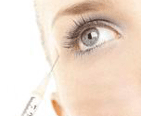The survey of American Society of Plastic Surgery carried out in 2000 had shown that two-thirds of cosmetic procedures patients are repeaters. This suggests that plastic surgery is another niche for a new kind of addiction to emerge, but due to a rather young practice of cosmetic surgery, it has not been investigated much.
Scientific facts
What we know about the addiction to plastic surgery is that it is clearly one more type of psychological dependence possibly caused by body dysmorphic disorder. The range of patients is limited to the representatives of the wealthy due to the high costs of repeated cosmetic surgery.
Off-limits of cosmetic procedure gives the completely opposite results than expected: the improvement you wish to have can cause an irreversible damage of normal body structure. However, some people, especially the sharks of the entertainment industry, are taking a risk and become dependent on plastic surgeons and their services.
Psychologists and psychopathologists have come to an agreement that multiple liposuctions , breast reduction surgeries as well as breast implants and chemical peels point out a wish for perfection running into extremes that are beyond what is considered normal.
The primary reason why people would get beauty maintenance work done is the wish to look younger. However, it is no longer true. People are obsessed with the idea that good looks can change their lives, and therefore assume that changing one’s appearance will change one’s personality. Plastic surgeons hear things like “Make me look like her or him” all the time and this is the indicator of the gap in self-confidence and self-esteem.
Red flag for addiction
There are certain character features that plastic surgeons and psychologists identify as the signals of possible addiction. Patients that are not very good candidates for cosmetic surgery tend to be over demanding and extremely picky. Some of them come to a surgeon’s reception with the picture of a celebrity one wants to look like and say “This is how I wanna look – like this person.” It would be normal to show a picture and say “I like those breasts. Can I have something similar?” or “Can I have my lips as full as hers?” But there are patients whose body structure is completely different from the person’s they want to resemble but they still insist on having a similar outlook.
A lot of people point out similar reasons for having a multiple plastic surgery for the same part of the body. They are usually related to not feeling safe, which evokes the fear of loosing one’s career, inability to accept or rather be resistant to critics towards his/her looks. This causes obsessive and occasionally even maniacal attempts to hide the features that supposedly make a person vulnerable. For example, one can spend hours in front of the mirror putting cosmetics in a particular order, buy too baggy or on the contrary too tight cloths and then spend an inadequate amount of time trying to decide what to wear.
It is important to note, that occasionally we all get a feeling that we do not look good enough or the way we want to. A healthy amount of self-critique encourages positive changes that do not require so dramatic means as a multiple plastic surgery. Cosmetic surgery addicts have problems not with their anatomy but with their mind. They will never reach a level of perfection that would make them feel completely satisfied with themselves, and that only proves that these symptoms are the sings of something deeper. Therefore in most cases they need psychological help rather than surgical.
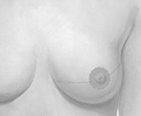 All scars of surgical nature are permanent. For example, mastopexy will leave deeper scars because the surgery is more involved: the more skin removed from the breast during surgery, the bigger the possibility to have deeper scars after it.
All scars of surgical nature are permanent. For example, mastopexy will leave deeper scars because the surgery is more involved: the more skin removed from the breast during surgery, the bigger the possibility to have deeper scars after it. 
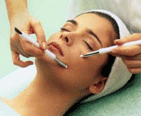 A mini facelift is a
A mini facelift is a 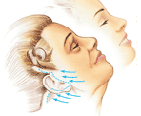 Facelift is a surgical procedure, professionally known as rhytidectomy, during which excess fat is removed, facial muscles are tightened and facial skin is redraped. As a result of this surgery people can see improved signs of the aging process, they are no longer visible. In addition, facelift may be performed in combination with other
Facelift is a surgical procedure, professionally known as rhytidectomy, during which excess fat is removed, facial muscles are tightened and facial skin is redraped. As a result of this surgery people can see improved signs of the aging process, they are no longer visible. In addition, facelift may be performed in combination with other 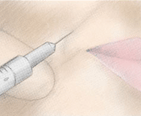 Collagen filling agents consist of collagen which is used in injectable form. A small injection is made in the area of a wrinkle and collagen fills a wrinkle leaving the skin with no lines. The results are permanent.
Collagen filling agents consist of collagen which is used in injectable form. A small injection is made in the area of a wrinkle and collagen fills a wrinkle leaving the skin with no lines. The results are permanent.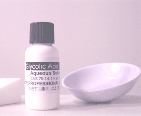 Chemical peel is a cosmetic, dermatological procedure, during which certain chemical solutions are applied on the skin to correct its appearance. During this procedure spoiled outer layers of the skin are removed with the help of solutions. These solutions include phenol, trichloroacetic acid (TCA) and alphahydroxy acids (AHAs).
Chemical peel is a cosmetic, dermatological procedure, during which certain chemical solutions are applied on the skin to correct its appearance. During this procedure spoiled outer layers of the skin are removed with the help of solutions. These solutions include phenol, trichloroacetic acid (TCA) and alphahydroxy acids (AHAs).  During your initial consultation the doctor will decide which type of chemical peel suits you best depending on your skin type, problems, age, general physical state and expectations.
During your initial consultation the doctor will decide which type of chemical peel suits you best depending on your skin type, problems, age, general physical state and expectations. 